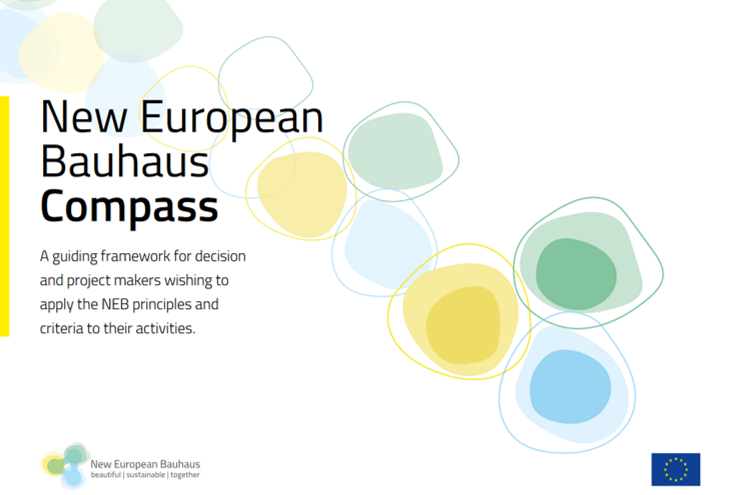
Public buyers participating in the latest meeting of the Community of Practice (CoP) on New European Bauhaus (NEB), organised within the context of the Big Buyers Working Together (BBWT) project, were introduced to the New European Bauhaus Compass and the NEB Toolbox. These are two key tools developed in the framework of the European Commission’s work with the New European Bauhaus.
The New European Bauhaus Compass is a guiding framework for decision-makers wishing to apply the NEB principles and criteria to their activities/projects during the design phase. The Compass describes the three core values of NEB (sustainability, aesthetics and inclusion), with 3 different levels of ambitions. The tool also provides a shared vocabulary for NEB practitioners and a systematic approach for the design of projects.
The NEB Toolbox is a comprehensive resource that serves as a guide and support for the implementation of projects. It is a collection of workshops and participatory practices based on best practices in implementation of NEB projects and collective experience of 20 place-based projects. This toolbox has been tailored for public bodies, but it can also be used by other organisations.
The toolbox focuses on four action areas: renovation of existing buildings and public spaces in a spirit of circularity and carbon neutrality; reservation and transformation of cultural heritage; adaptation and transformation of buildings for affordable housing solutions; regeneration of urban or rural spaces.
In addition to these, during the meeting participants also got to know two potentially valuable tools that are still in development. The “NEB Investment Guidelines”, to be finalised at the end of July 2024, aim to facilitate alignment to the NEB core values and working principles in the built environment sector, and more specifically in building, open spaces and neighbourhood projects. The “Self Assessment Tool”, also to be finalised at the end of July, should help rationalise standards, guidelines and codes of practice.
Participants noted that while these tools are all valuable, it will still be a challenge to translate the New European Bauhaus principles to public procurement. However the cooperation - not just between the group, but also with the European Commission’s Joint Research Centre - should make these challenges more feasible.
More information on this Community of Practice can be found on the European Commission’s Public Buyers Community. Participants interested in joining the CoP are encouraged report their interest in the work of the Community by sending an email to Big Buyers Working Together Secretariat, at big.buyers@eurocities.eu
Details
- Sector
- View
- Public
- Community
- New European Bauhaus (NEB)
- Publication date
- Submitted by
- European commission
- Yes

